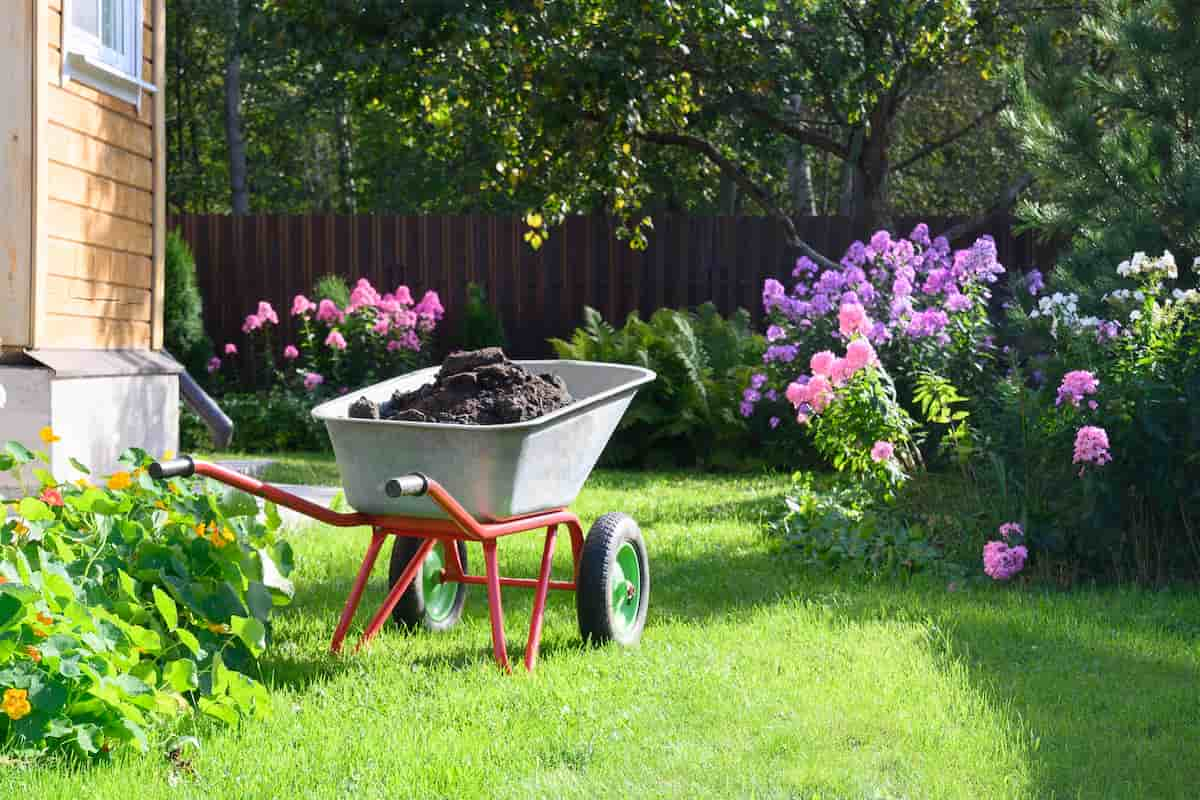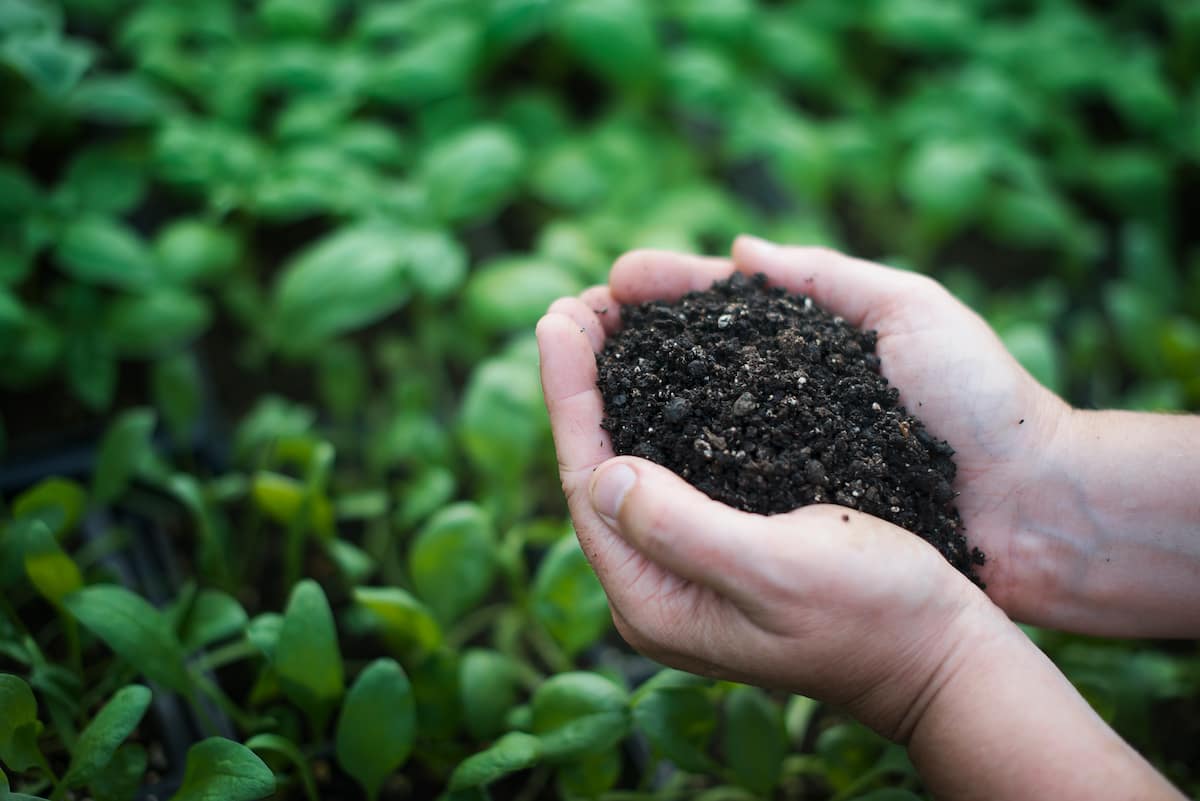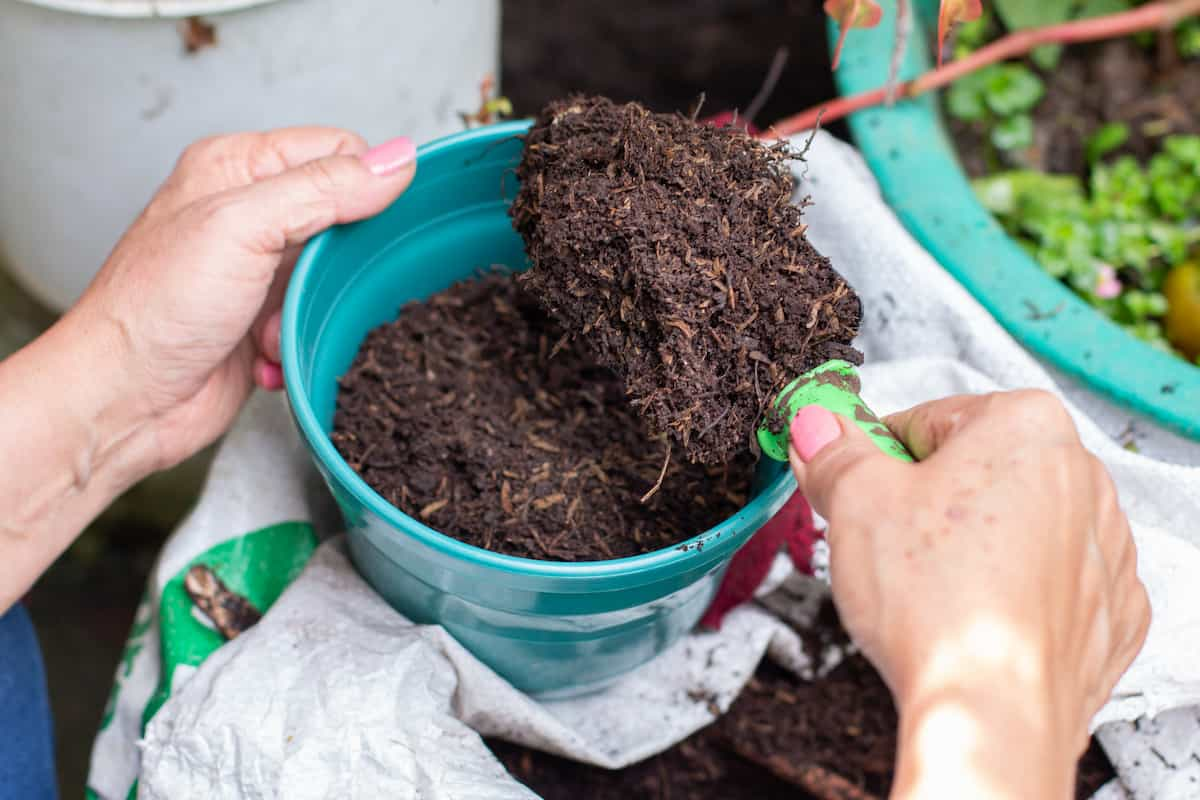Bokashi composting involves sealing food scraps and organic waste in an airtight container, adding bokashi bran, and periodically draining off the liquid until the scraps are fermented and ready for composting. A bokashi system uses bacteria that don’t require oxygen to thrive, unlike other aerobic composting systems, which require air to break down materials.

In technical terms, bokashi is a form of fermentation rather than composting. Bokashi ferments food and results in a matter that is still too acidic to add to plants. Composting decomposes the waste into matter that can be added to a garden, but bokashi ferments food and produces matter that can still be added to plants. This is why bokashi composting ends with adding the material to a compost bin or fallow area. Bokashi is a method of fermenting food scraps so they can be composted faster.
Bokashi Composting Process
What is the Bokashi Bran?
Bokashi composting requires a Bokashi bran and a Bokashi bucket with a stopper. The medium contains beneficial microbes that thrive in anaerobic, acidic environments but smell less foul than in natural, unfettered anaerobic conditions. It involves preparing a brew that will attract the appropriate strains of bacteria, immersing the host material, and allowing the microbes to ferment. Microbes reproduce wildly for several days on the energy provided by molasses. After fermentation, the inoculated host can be dried, packaged, and stored long.
What Materials You Can Bokashi Compost
- Fruits and veggies, cooked or raw
- Eggshells
- Nuts and seeds
- Coffee grounds and looseleaf tea
- Cooked food and leftovers
- Beans, lentils, hummus, bean dips
- Meat, fish, and bones of those animals
- Dairy products or food with dairy in it
- Fermented and preserved foods
- Plant clippings
- Oyster, clam, and shrimp shells
How to Bokashi Compost
- A bucket with a drainage spout and some bokashi bran will be needed to start your bokashi composting. It is the bucket (also known as a “bokashi bin” or “bokashi bucket”) that provides the right anaerobic environment and provides easy drainage. At the same time, the bran (fermented organic matter, also called effective microorganisms” or “inoculants”) helps break down waste and flourish in the bokashi environment.
- Position the plastic grate on the ledge near the bottom of the bucket with the knob upright. Make sure the tap is in the off position.
- Add scraps to the bucket. Kitchen scraps such as fruit, vegetables, coffee grounds, egg shells, meat, and cheese can be added to your bucket when you have them. Other organic materials work fine, as well as grass clippings, sawdust, and dead leaves.
- Add bokashi bran and squish down. You should sprinkle a layer of bokashi bran on top of your kitchen waste before pressing them down firmly (with your hands, a plate, or a kitchen masher). Pressing will help remove air from the matter and create an anaerobic environment.
- Once the bran has been added and squished down, replace the lid. Store the bucket away from direct sunlight.
- Continue adding food scraps until the bucket is full. Continue layering with more bokashi bran when you add food scraps.
- The fermentation process produces excess liquid, which can hamper the beneficial bacteria. Draining off excess liquid every other day using the stopper is a good idea. You can dilute this liquid and use it as fertilizer for your houseplants.
- Once the waste is full, it can be buried. After each use, wash your Bokashi bucket.
- After two weeks, bury it in a fallow spot in your garden. It should take two weeks for the matter to ferment properly. The texture should be soft, and the smell should be slightly sour. It needs a little extra time to go through the full composting process because it is still too acidic for plants’ roots. The fermented food waste can be buried in your garden or added to your composting bins or worm bins to decompose.
- Add it to your garden soil. Your fermented bokashi compost should be ready for planting within two weeks of starting to compost. Plant it over it if you bury it in your garden. Mix it into your garden bed if you add it to your compost pile.
In case you missed it: How to Make Worm Tea Compost Fertilizer: Homemade Recipe, DIY for Container, Indoor, and Backyard Garden Plants

How to Use the Fermented Organic Matter Produced From Bokashi Bucket
- You can bury your fermented waste deep in the center of your traditional compost pile. The fermented material should be buried within the pile’s center for about a week. Afterward, combine the pile with it.
- Vermicomposting bins can be filled with small amounts of fermented materials. Your worms will eventually convert the new material into vermicompost.
- You should bury it at least one foot deep outside. You should not place it too close to established plants, as it can initially acidify soil pH. Alternatively, you can bury it deep within a large, soil-filled container. Soil-based microbes will break down organic matter within three to six weeks.
Benefits of Bokashi Composting
- In contrast to traditional composting, bokashi can break down food scraps within one month to two weeks in anaerobic containers and another two weeks in a compost pile or fallow patch.
- Traditional composting has a reputation for giving off strong, bad smells. But bokashi emits much less. This is because it is sealed up in an airtight container rather than exposed to the open air. Traditional composting bacteria produce foul odors, but the anaerobic fermentation process does not.
- Regular compost heaps require maintenance, such as turning, watering, and monitoring. The Bokashi method is much simpler. Place food scraps in a bucket and drain off the liquid every few days.
- As it can exist in its smallest form on your kitchen countertop, bokashi is a great choice for composting if you live in an apartment or an area without a large backyard space.
- Unlike traditional composting, bokashi’s anaerobic process can handle meat and dairy products (because the compost doesn’t reach enough temperatures or may attract unwanted pests or odors).
- The liquid should be drained off regularly if you want the bokashi bacteria to flourish. This “bokashi tea” liquid should be treated as a composted tea. For houseplants or herb gardens, it is a great source of nutrients.
In case you missed it: How to Make Coffee Grounds Compost Fertilizer: Homemade Recipe, DIY for Container, Indoor, and Backyard Garden Plants

Conclusion
Unlike other forms of composting, bokashi composting ferments organic matter rather than fully decomposing it. In contrast to cold or hot composting, Bokashi composting is a smaller system designed only for food waste. Therefore, bokashi composting cannot handle large amounts of yard waste. In a bokashi system, carbohydrates are essential, so yard waste would also throw off the balance of carbohydrates versus other materials.
- Feed Your Flock for Less: Top 10 Tips to Save on Chicken Feed
- Ultimate Guide to Ossabaw Island Hog: Breeding, Raising, Diet, and Care
- Hatching Answers: The Top 10 Reasons Your Chickens Aren’t Laying Eggs
- Eggs and Economics: Breaking Down the Cost of Raising Backyard Chickens
- Defend Your Greens: Proven Methods to Keep Iguanas Out of Your Garden
- Ultimate Guide to Cinnamon Queen Chicken: A Comprehensive Guide for Beginners
- Ultimate Guide to California Tan Chicken: Breeding, Raising, Diet, Egg-Production and Care
- Ultimate Guide to Marsh Daisy Chicken: Breeding, Raising, Diet, and Care
- 10 Types of Chicken Farming Businesses You Can Start for Profits